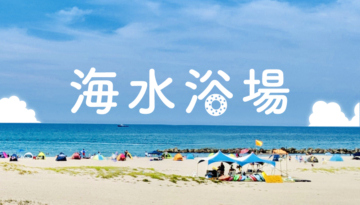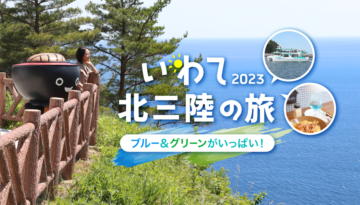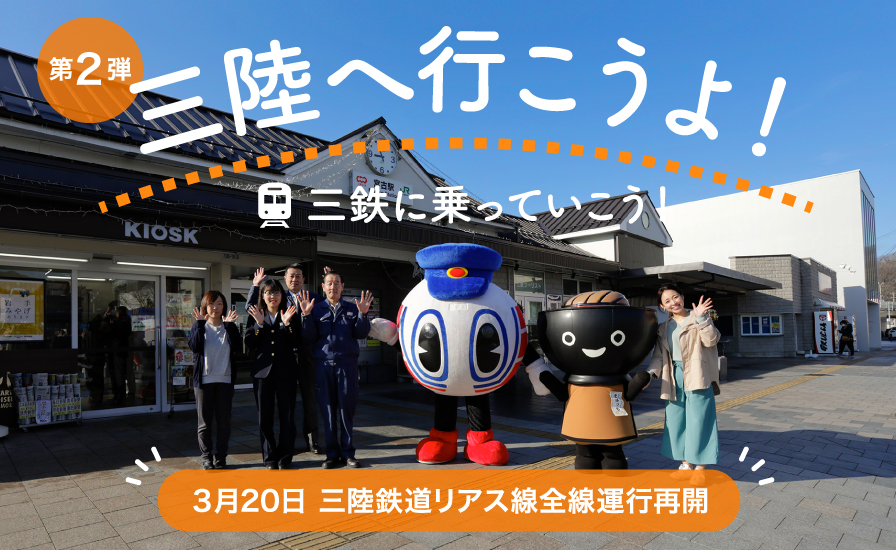
The restoration work that had been ongoing due to the damage caused by Typhoon No. 19 has been completed, and the Sanriku Railway Rias Line will reopen on March 20th!
With a total length of 163km, why not enjoy a trip full of sights, experiences, and delicious food on the Sanriku Railway, the longest third-sector railway in Japan?
This time, the dog siblings Sobacchi will introduce you to the northern part of the Iwate coast in spring!
INDEX
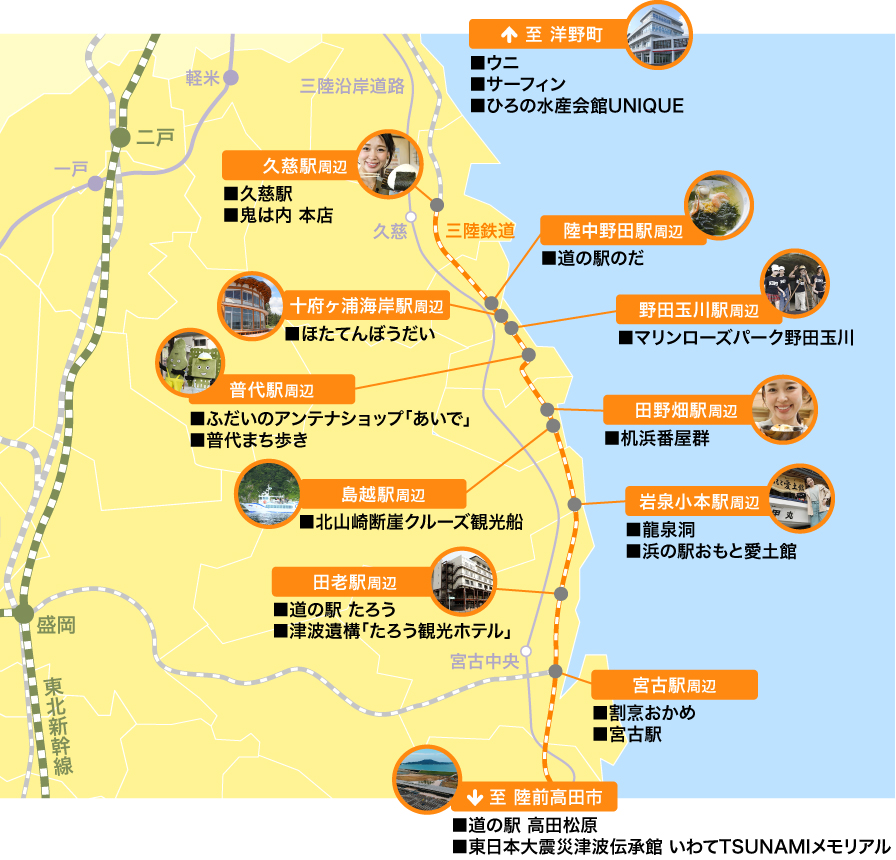
*The contents posted are as of February 13th and 14th, 2020.

Tsukuehama banya group
Nearest station: Tanohata Station
The banya, which was once used as a fishing base, was selected as one of the “Top 100 Historical and Cultural Properties of Fishing Villages to Preserve for the Future,” but it was washed away by the tsunami of the Great East Japan Earthquake. Currently, the 24 banya buildings have been restored and are used as a facility for holding various hands-on programs where you can experience Tanohata’s fishing industry and life at sea, as well as serving as a departure and arrival base for the Sappa Ship Adventures.
You can experience banya cooking and salt making by fishermen (hammoud), so this time I decided to try banya cooking.
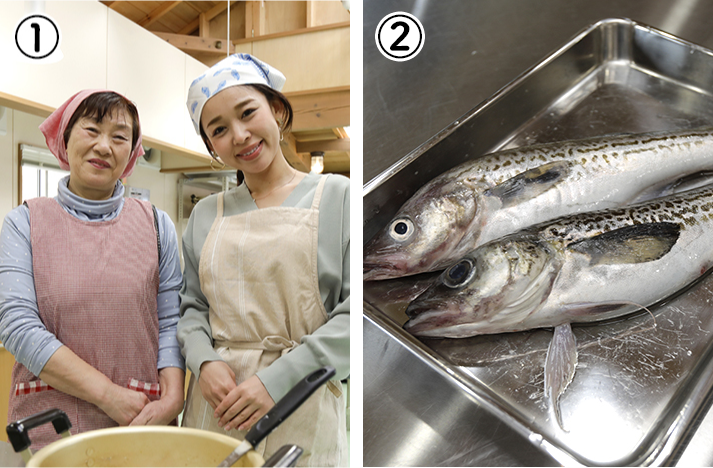
①Kanako Konagane will be teaching us banya cuisine. On this day, we will make “Sanpei soup” using Alaska pollock.
②Fresh pollack! This is my first time cleaning fish. I’m so excited!

③Although I was a little surprised at the beginning, he slowly and gently taught me the key points, such as the direction in which I should insert the knife and how to use my hands. Even a beginner like me can do this!
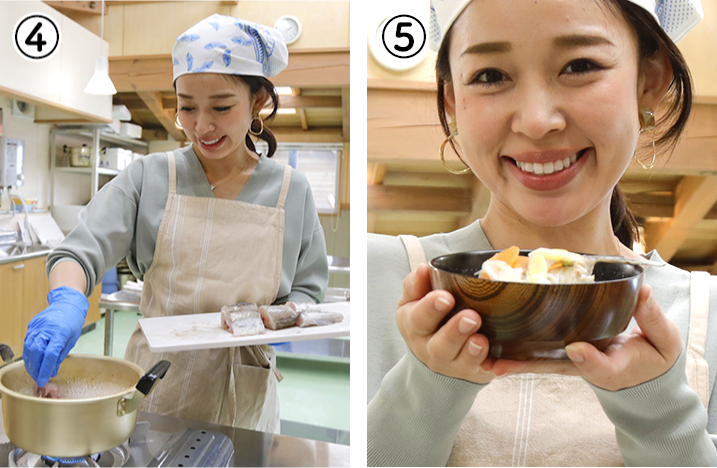
④ Add the vegetables and fillets to the piping hot soup stock made from kelp, and season simply with salt and sake. Once the ingredients are cooked through, it’s ready.
⑤ Pour it generously and it smells great!
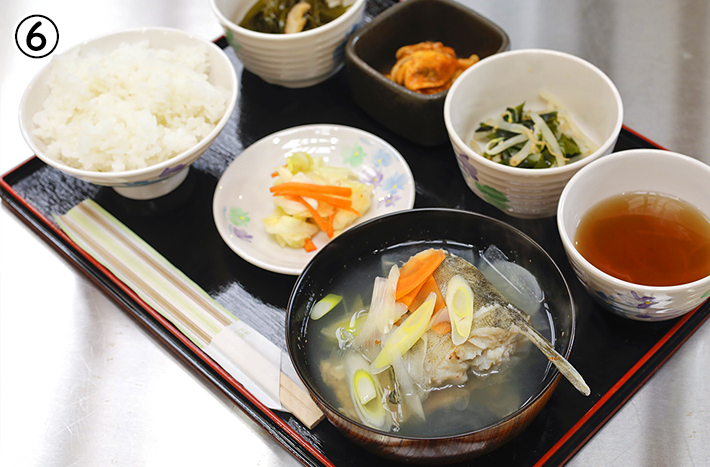
⑥The finished dish can be combined with easily prepared side dishes as a set meal.
Sobacchi detour information
Hamachaya Shokudo
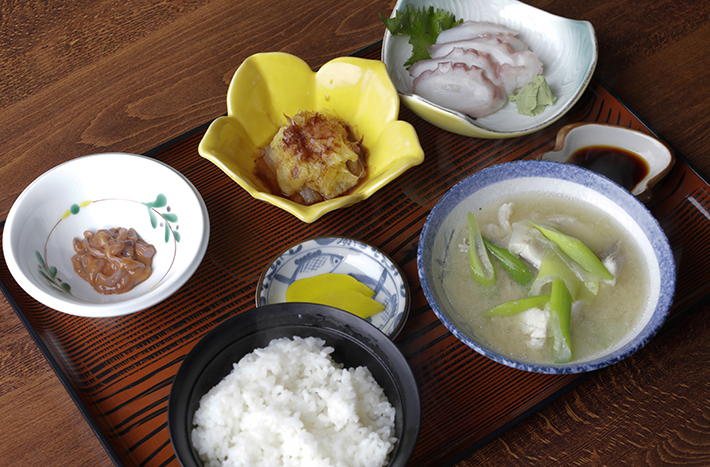
It used to operate near the Tsukihama Banya group, but it was washed away by the tsunami of the Great East Japan Earthquake and relocated along National Route 45. The “Fish soup set meal” is filled with plenty of fish and comes with sashimi for an exquisite taste! Other popular dishes include the “Isomono Ramen,” in which the bowl is covered with seaweed, and the “Hamachaya Set Meal,” which mainly features sashimi prepared by the owner, who is a fisherman. In the summer, we highly recommend the “Uni Bowl” where you can enjoy Sanriku’s sea urchin!
Location 205-4 Sugakubo, Tanohata Village, Hei-gun, Underground
Contact phone number 0194-34-2295
Business hours 11:00-21:00
Irregular holidays
Kitayamazaki Cliff Cruise Sightseeing Boat
Nearest station: Shimagoe Station
A sightseeing boat that departs from Shimagoshi Port and goes around Kitayamazaki. This is a cruise where you can see the Tanohata coastline with its continuous cliffs from the sea. You can also enjoy feeding the black-tailed black-tailed black-tailed cats on the boat, and the scenery of the shoreline and the flock of white black-tailed black-tailed cats against the blue sea and blue sky is sure to make for a great photo opportunity. Why not enjoy the scenery that cannot be seen from land?
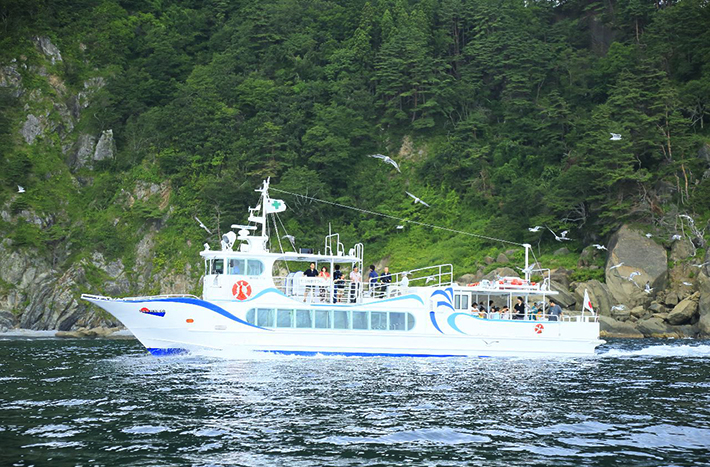
One lap takes about 50 minutes and you can enjoy plenty of impressive views!
Ryusendo Cave
Nearest station: Iwaizumi Komoto Station
Ryusendo Cave is one of the three major limestone caves in Japan. The highlight is the underground lake, which boasts some of the clearest water in the world. Of the estimated total length of 5,000 meters, only 700 meters are open to the public. Inside the cave, each unique spot, such as the Moon Palace and the Hyakken Corridor, has been given a name, making it easier to identify photo points and viewpoints. It’s open all year round, so you can visit regardless of the season. Also, be sure to take a look at the five types of bats that live inside the cave, which are designated as national natural monuments.
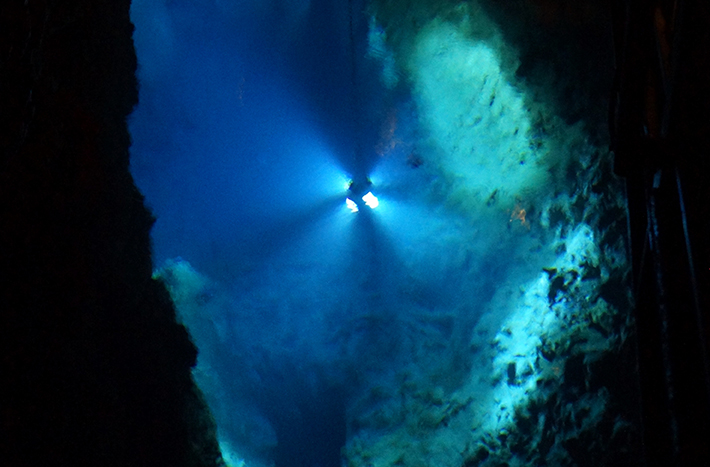
The dragon blue lake water, countless stalactites inside the cool cave, and a fantastical world.
Hamanoeki Omoto Aidokan
A direct-from-farm facility located right next to Omoto fishing port. There is also a cafeteria that is only open on Saturdays, Sundays, and holidays, and the “Komotohama Ramen,” which is a soup stock made from “Komoto crabs” and topped with seafood such as seaweed, and the daily platter of sashimi, are said to leave many people running out of rice. “Ryuko Kaisendon” is a recommended menu item that can only be tasted here. The store is lined with fresh seafood caught that day, as well as processed seafood products, and is popular among locals and people from the surrounding area.
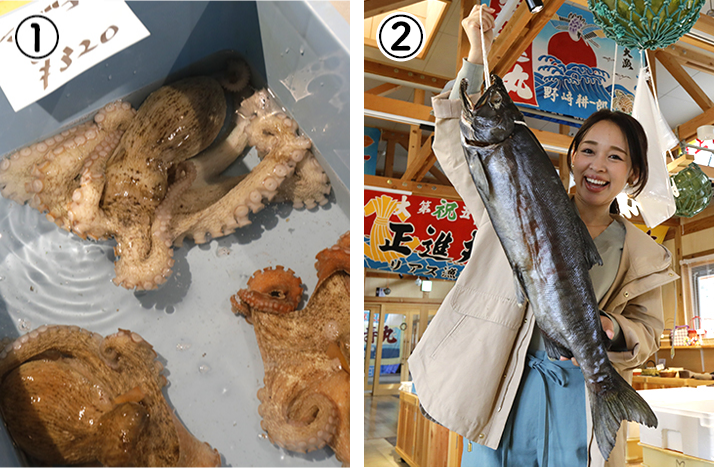
① Live octopus, hairy crab, flatfish and greenling, just freshly caught!
② Speaking of Komoto, it’s salmon! Following winter’s Shinmaki salmon, the precious “Sakura trout” will be in season from the latter half of March.
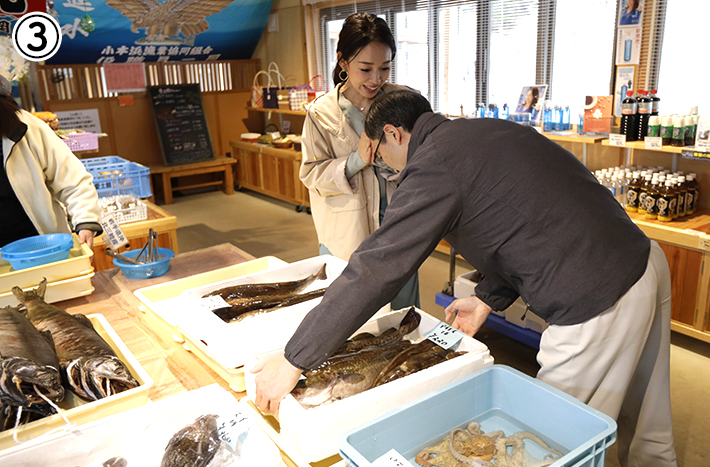
③The manager, Shinsuke Sato, is arranging seafood brought in directly by local fishermen one after another. Apparently, there are some regulars who come to the store with surprises depending on the weather.
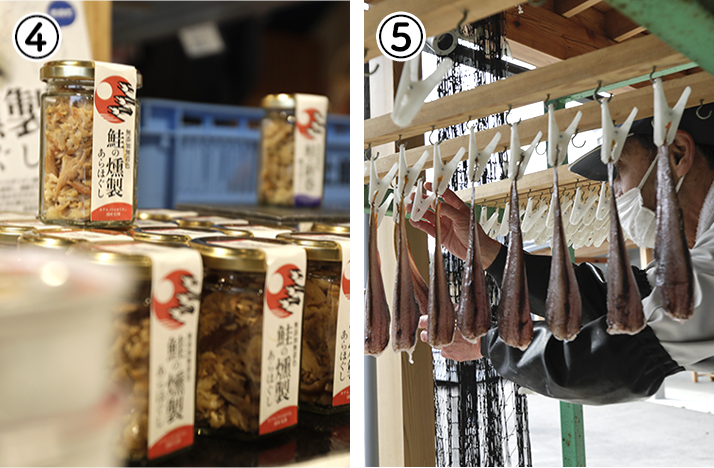
④ Selected processed products are lined up.
⑤Staff members are processing fish for overnight drying outside the store. The meat is plump and looks really delicious!
Nearest station Taro Station
Roadside Station Taro (Michinoekitaro)
Roadside Station Taro, which has a farm-to-table store, a restaurant, and a tourist information center, was relocated to its current location after the Great East Japan Earthquake due to improvements to the Sanriku Coastal Road, and had its grand opening on April 7, 2018. In 2016, it was certified as a priority “Roadside Station” by the Ministry of Land, Infrastructure, Transport and Tourism. There is also an office for learning disaster prevention guides inside Taro Shiori Station, where the tourist information center is located, so you can also consult with the in-house guide of the Tsunami Ruins Taro Kanko Hotel.
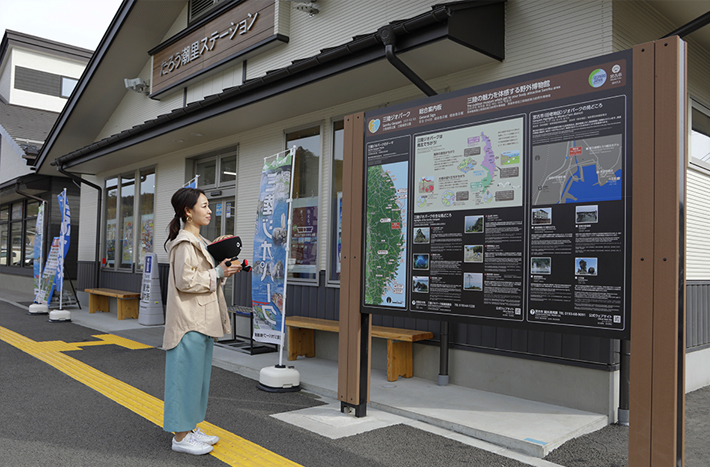
There is also a convenience store that opens early in the morning and a restaurant that is open until late at night, making it very convenient. There is a large parking lot, perfect for a break!
Tsunami remains “Taro Kanko Hotel”
The former Taro Kanko Hotel, which operated as a lodging facility, was flooded up to the fourth floor during the Great East Japan Earthquake, and the second floor was washed away with only the columns remaining. This building, which survived without collapsing with only some pillars left, underwent a conservation project in 2014, and in March 2016 it was decided to be preserved as a tsunami relic. It is also used by the “Learning Disaster Prevention” guide, which is working to raise disaster prevention awareness, and the elevator was completed on January 18, 2020, so that it can be used by a wide range of people, including people in wheelchairs and the elderly. became. To tour the inside of the facility, you will need to apply to become a “Learning Disaster Prevention” guide, so please check in advance.
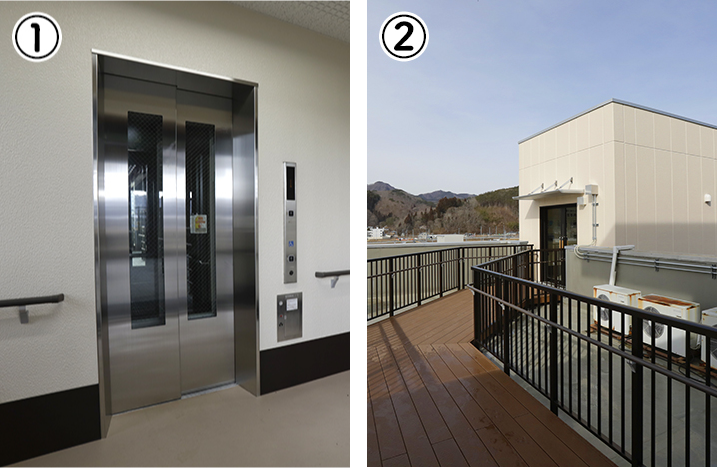
①② A new elevator has been installed for those who were unable to take the stairs and were unable to tour.
Those who can use stairs will continue to use them as usual to experience the height.
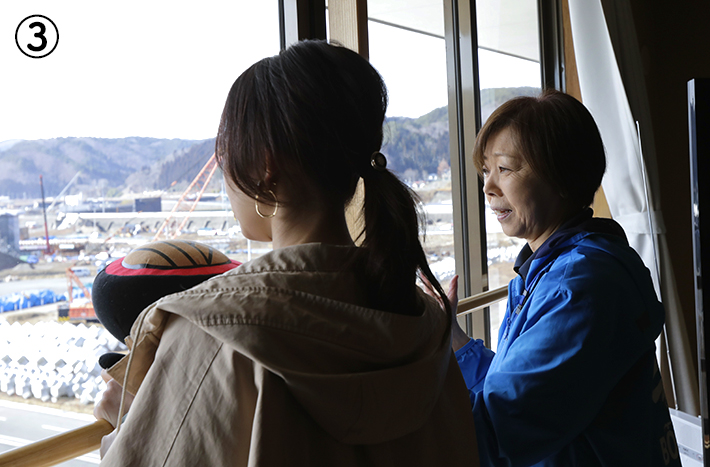
③ Learn with disaster prevention guide Kumiko Motoda. The view from the room, which used to be on the 6th floor, changes every day.
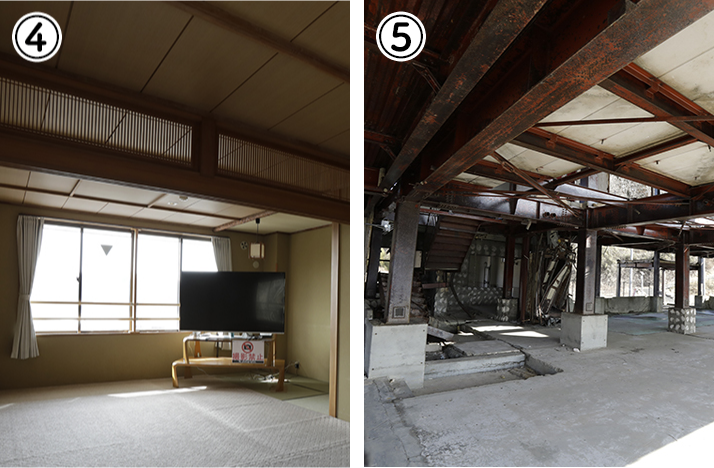
④⑤Tsunami remains with the purpose of conveying the true experience and raising awareness of disaster prevention for the future. More than 100,000 visitors have visited so far.
Tsunami remains “Taro Kanko Hotel”
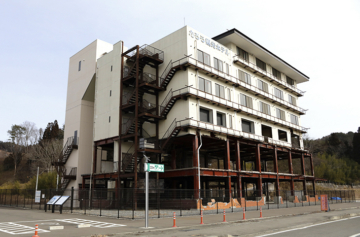
- Address
- 80 Taro Nohara, Miyako City
- Inquiries
- Miyako City Industrial Promotion Department Tourism Division / Phone 0193-62-2111
“Learning disaster prevention” guide application/inquiry (one company) Miyako Tourism and Cultural Exchange Association Learning disaster prevention / Telephone 0193-77-3305 / Reception hours 9:00-18:00 - Access
- Approximately 20 minutes walk from Taro Station
Nearest station : Miyako Station
Miyako Station
The station building was relocated on March 23, 2019, and the former JR Miyako Station is now under the management of Sanriku Railway. There is a KIOSK and a standing soba shop inside the station building, and the adjacent Sanriku goods specialty store “Santetsuya”, which opened on the same day, carries a large selection of “Kurojika Senbei”, collaboration products with Santetsu, and original goods.
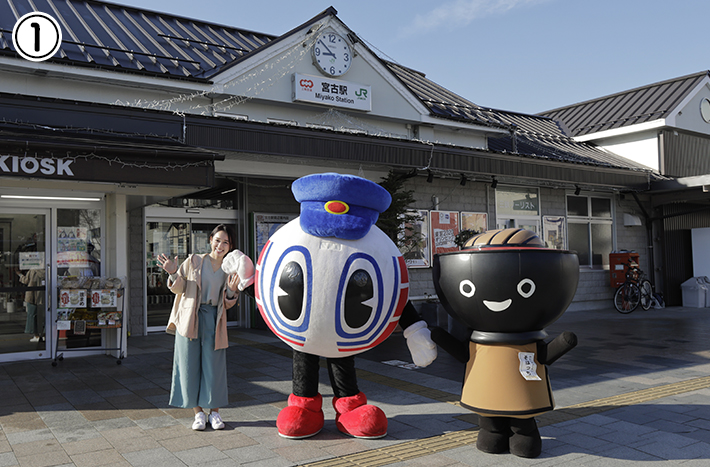
① San Tetsukun welcomed us.
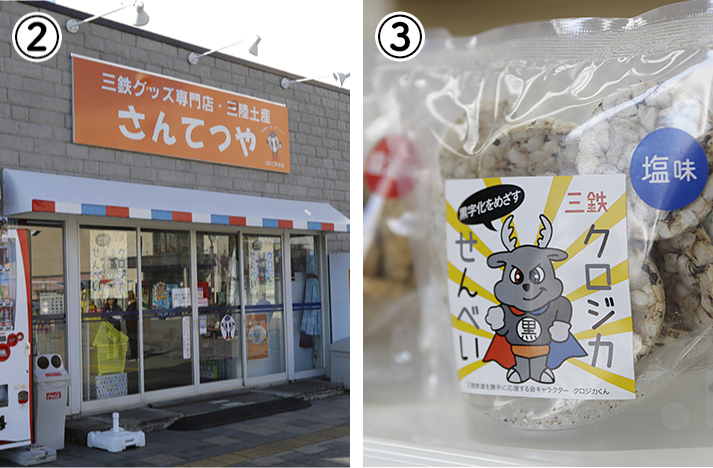
②Santetsuya, a Santetsu goods specialty store directly managed by Sanriku Railway.
③The very popular “Kurojika Senbei” comes in salty and soy sauce flavors.
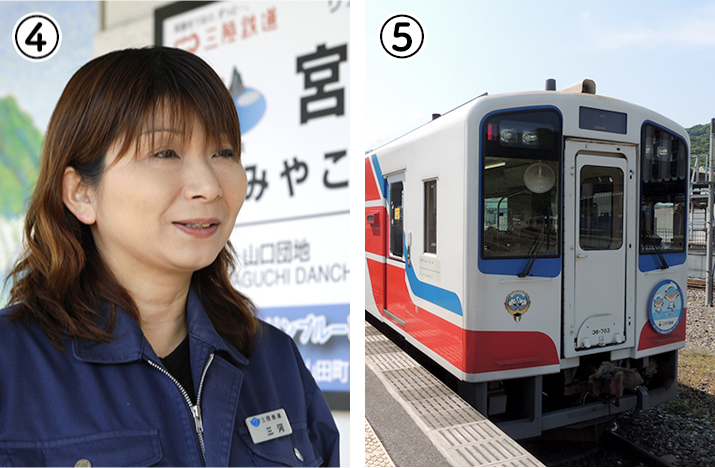
④⑤ Wakiko Mikawa, Sanriku Railway Public Relations Officer: “We recommend the operation of various event trains and the delicious seafood of Sanriku.Please come and ride the Sanriku Railway where you can have fun and learn.We look forward to seeing you. !”
Miyako Station
- Address
- 1-1-80 Miyamachi, Miyako City
- Inquiries
- 0193-63-7727
Kappou Okame
In addition to menus using seasonal seafood, we also have standard menus such as tempura set meals, tempura bowls, and fillet cutlet set meals, as well as sukiyaki and shabu-shabu, making this a great lineup for both families and tourists who want to enjoy Sanriku gourmet food. We also offer Miyako’s new specialty, “Bottle-don”, so why not try it at each store and compare?
“Kappo Okame” originally opened in the early Showa era as a rice koji shop, and since then has run a restaurant that makes use of local ingredients, and is a restaurant that is loved by the local people.Today, it still produces handmade koji using domestically produced rice. On sale.
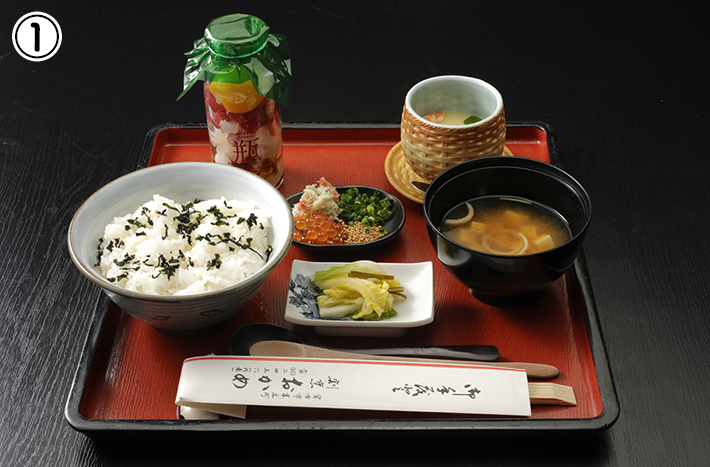
①Kappo Okame’s “Kindon” is filled with scallops, octopus, tuna, amberjack, and other seasonal ingredients! The yolk of a large Ryusendo egg is on top.
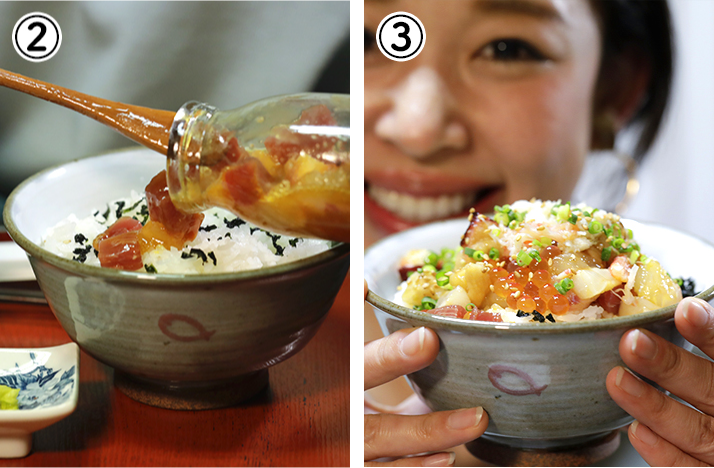
② Mix well with a long-handled spoon and add to the bowl of rice.
③It’s done, let’s eat it!
Kappo Okame
- Address
- 1-18 Suehirocho, Miyako City
- Inquiries
- 0193-62-2456
- Access
- About 10 minutes walk from Miyako Station
- Business Hours
- 11:30-14:00 / 17:00-21:00
Closed on Mondays
Pick up information
Michinoku Sea Breeze Trail
The Michinoku Shiokaze Trail is a trail course set mainly along the coastline from Hachinohe City, Aomori Prefecture to Soma City, Fukushima Prefecture. Why not take a walk along the charming course of Iwate Sanriku, with its beautiful ria coastline, while enjoying the scenery of each season.
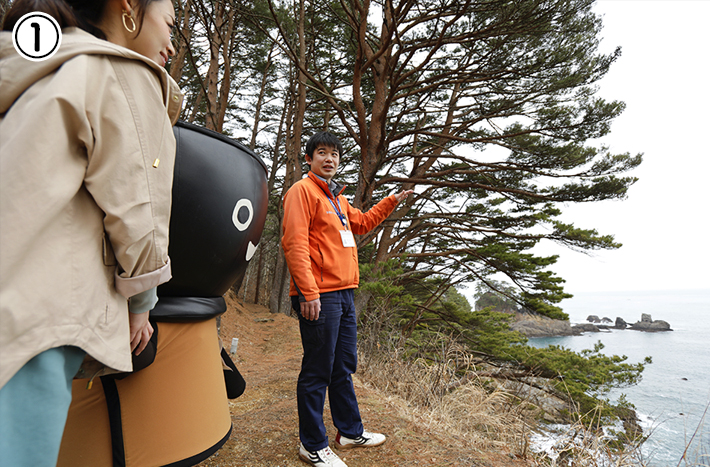
① Mr. Kota Akasaka of the NPO Experience Village Tanohata Network guided us to the wonderful view spots of Bentenzaki.
Soba-chan was surprised and mesmerized by the spectacular view that even saw the Unosu Cliffs in the distance!
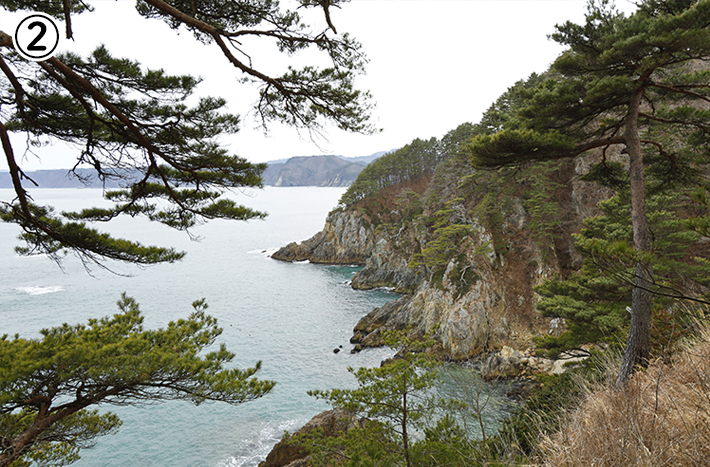
② The route from southern Fudai Village to Tanohata Village and northern Iwaizumi Town is a recommended route that offers an adventure along the water’s edge, ups and downs, and several observation points, as well as spectacular views.
Michinoku Sea Breeze Trail
For detailed route information and model courses, please check the Michinoku Shiokaze Trail website.
[Ministry of the Environment_Michinoku Sea Breeze Trail]
http://tohoku.env.go.jp/mct/
[Michinoku Sea Breeze Trail Natori Trail Center]
https://www.mct-natori-tc.jp/
This is convenient! “Sightseeing shared taxi”
Regular flights run between Tanohata Station and Kitayamazaki. Even if it is not possible to walk the entire trail course, you can use it to walk at each point according to your travel schedule, such as “walking only Bentenzaki” or “starting from Kitayamazaki and walking to Tsukihama”.
[Sightseeing shared taxi]
https://www.vill.tanohata.iwate.jp/kankou/info/access.html
*The contents posted are as of February 13th and 14th, 2020.
Part 2 Let’s go to Sanriku! Special Feature – View the Kuji, Noda, and Fudai areas
Part 2 Let’s go to Sanriku! Special feature – there’s more! I see







